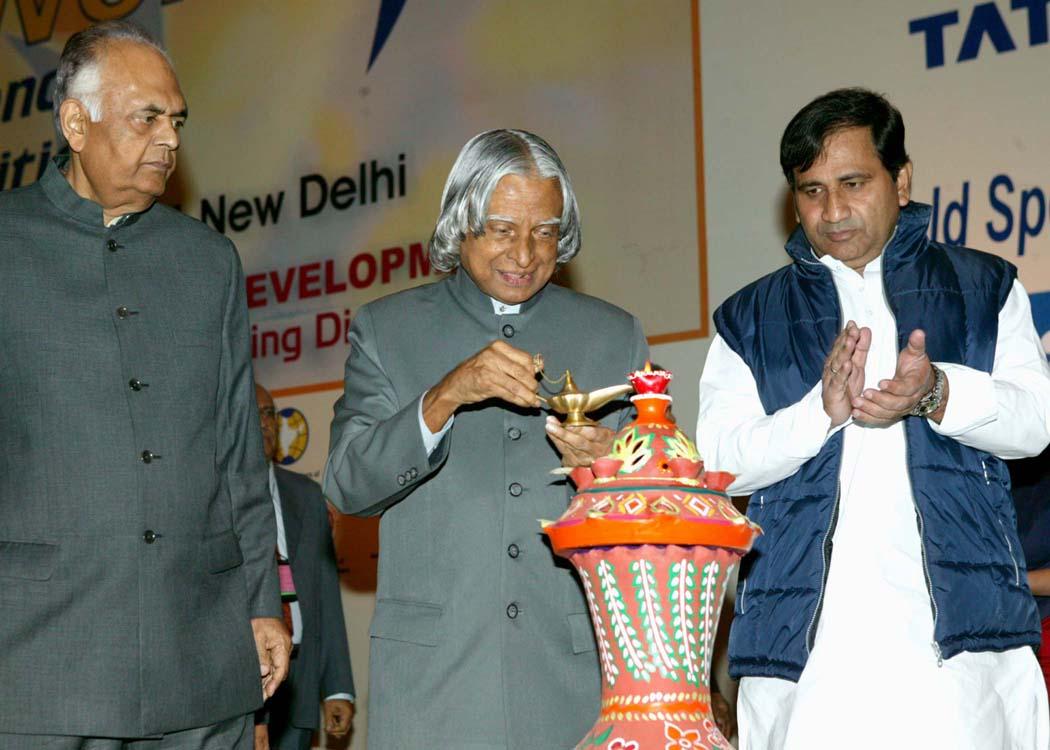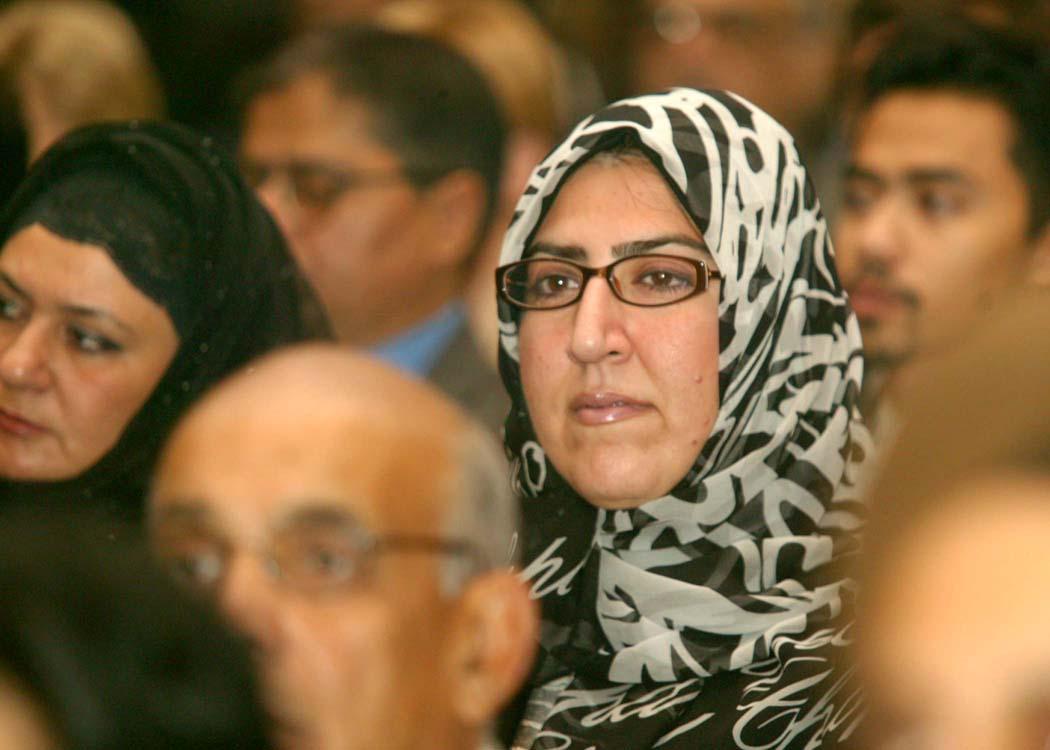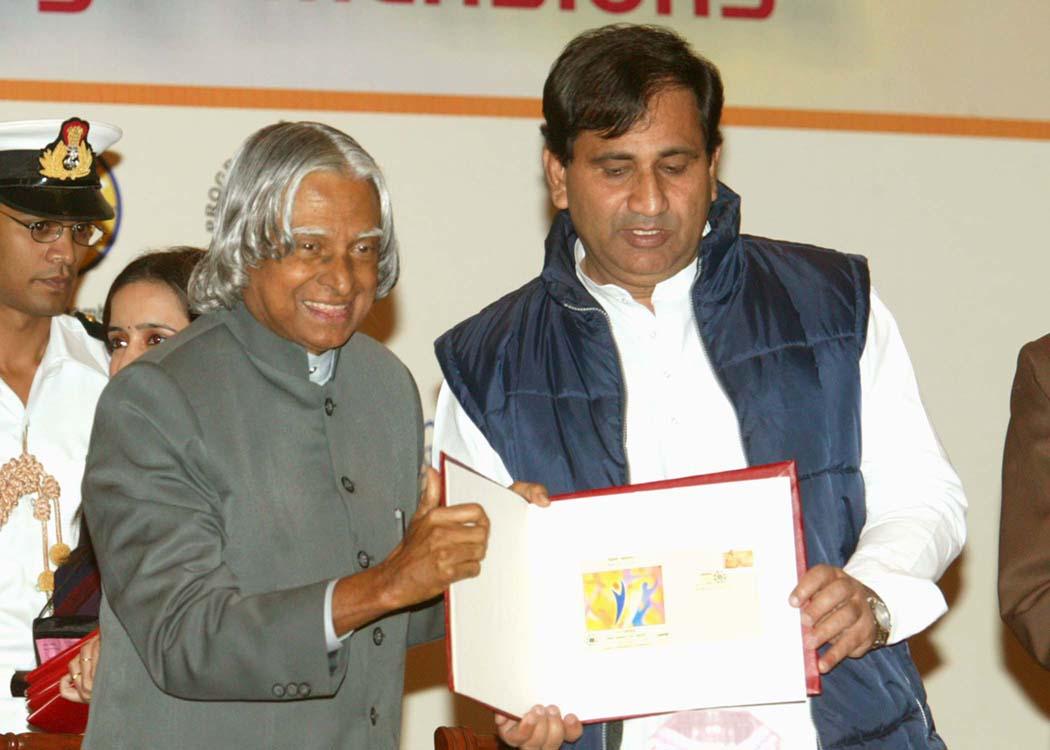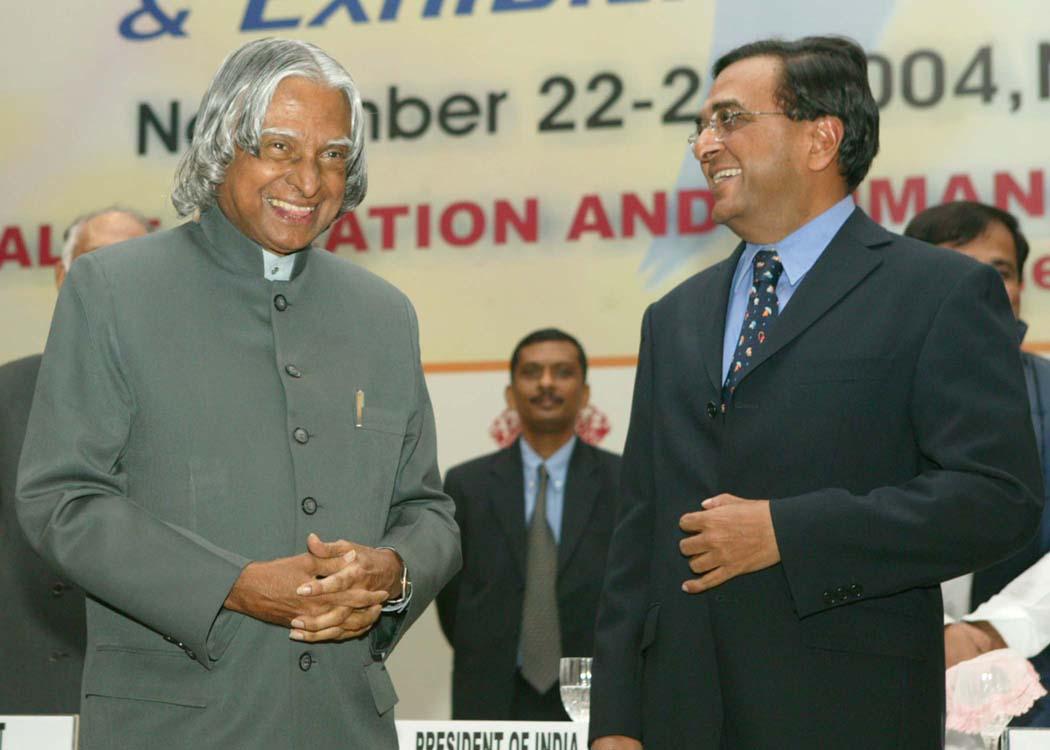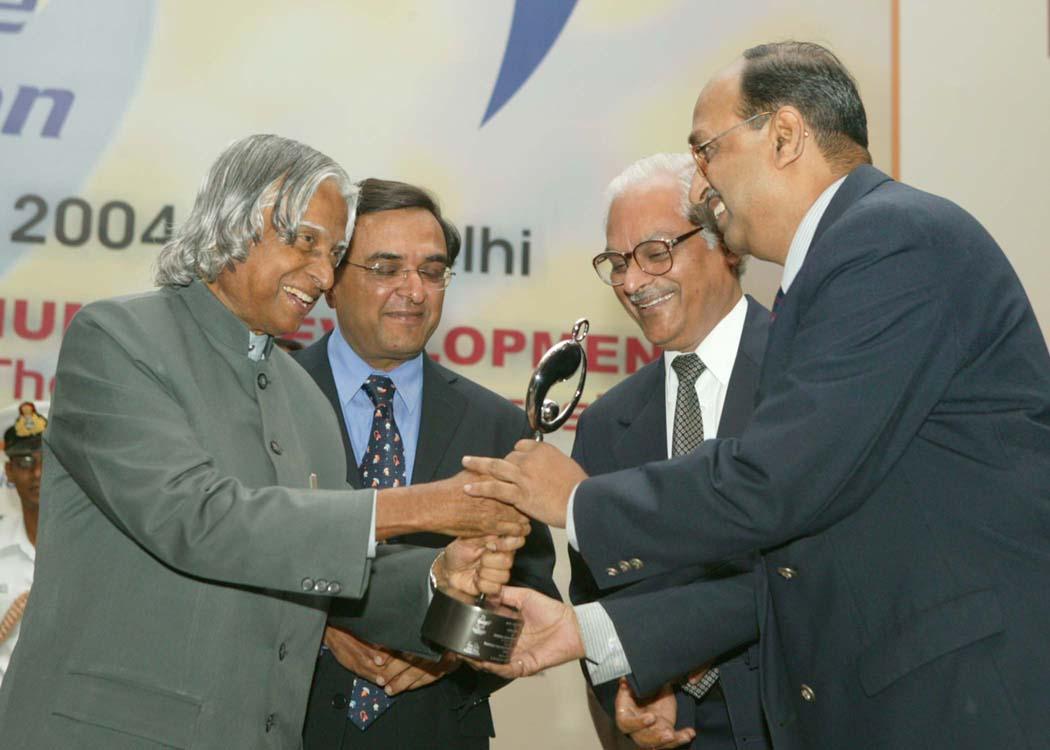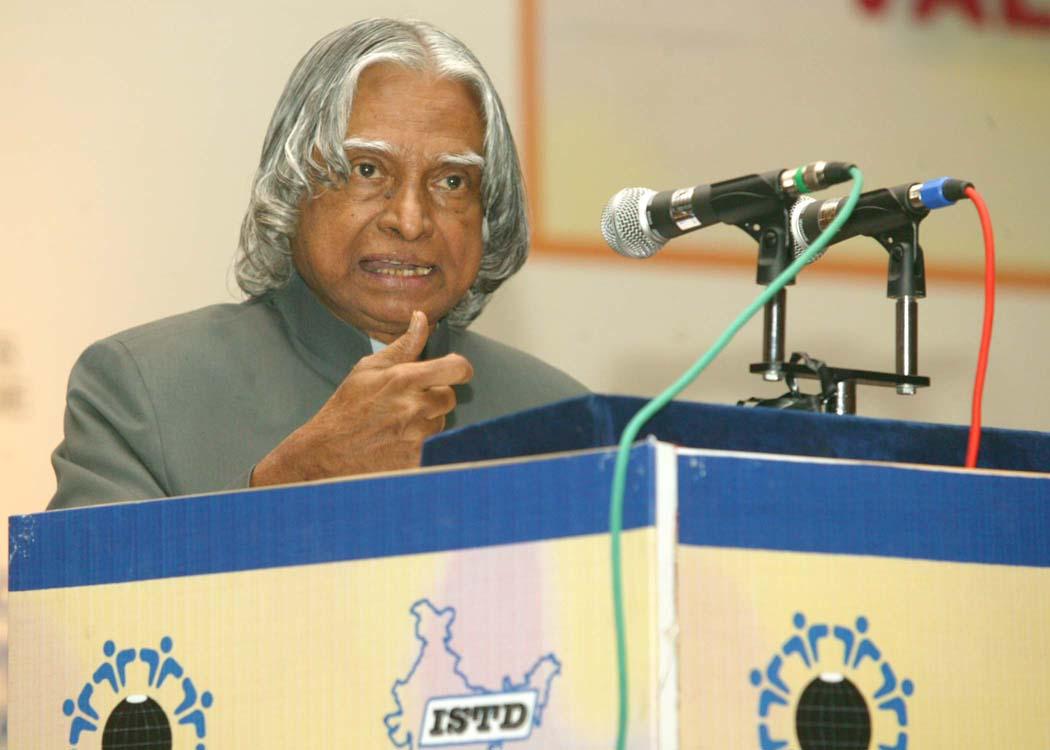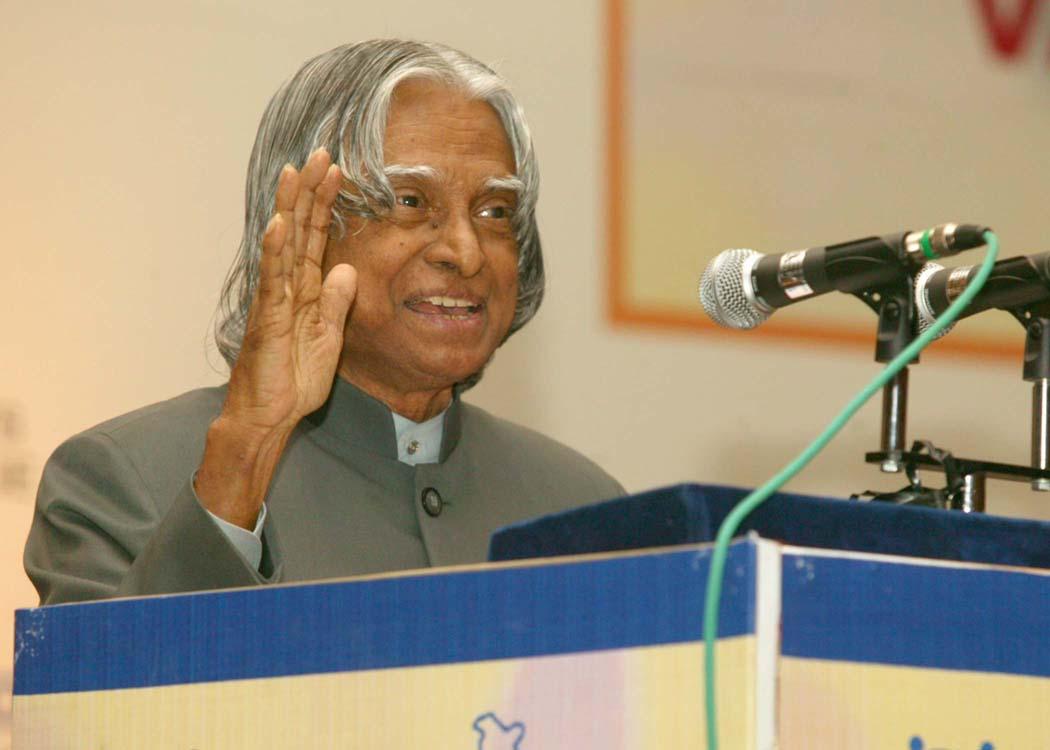Address At The Inauguration Of The 33rd Conference & Exhibition On Value Creation And Human Development The Emerging Dimensions Organised By The International Federation Of Training And Development Organisations (Iftdo)
New Delhi : 22-11-2004
EVOLUTION OF BRAND INSTITUTIONS
I am delighted to inaugurate the 33rd Conference & Exhibition on ?Value Creation and Human Development ? the Emerging Dimensions? being organized by the International Federation of Training and Development Organisations (IFTDO) in collaboration with Department of Personnel & Training and Department of Public Enterprises. My greetings to all the organizers, human resource developers, academicians, researchers, national and international delegates and distinguished guests.
Since this is a Conference on Value Creation and Human Development, I thought of sharing with you some of the models of institutional development and the personalities which can be useful for the corporate community to follow. I would like to discuss about ?Evolution of Brand Institutions?. There are five components in Evolution of Brand Institutions.
I. Creating a brand image for the institution
Promoting excellence in organizations leading to the creation of brand institutions depends on five important components. They are: Design capability, Competitiveness, Organisational transformation, success/failure management and establishment of Institutional ethical standards. We have a few brand institutions in the country and many are aspiring to become. Let us discuss.
Design capability
Technology consists of stages like research development, technology transfer, technology absorption and production of products or systems with performance, quality and cost effectiveness.
The indigenous design capability is built through rigorous training in design, development, fabrication and production processes with in the country by multiple institutions through appropriate out sourcing and use of available national expertise. It is essential to evolve the value chain in product life cycle. Wealth generation depends largely on design phase which contributes about 60% to the efforts of development of the product. The quality of the product has to be built-in during the design phase itself. The indigenous design and development capability is the key to acquire competitive edge. It is very important for Indian R&D team, business community and industries to recognize the importance of design capability.
Law of development: Competitiveness
Last two years, I was studying the development patterns and the dynamics of connectivity between nations, especially in trade and business. As you all know the world has few developed countries and many developing countries. What is the dynamics between them and what connects them? Developed country has to market their products in a competitive way to different countries to remain as developed country. The developing country to get transformed into developed country; they too have to market their products to other countries in a competitive way. Competitiveness has three dimensions: quality of the product, cost effectiveness and supply in time. Indeed this dynamics of competitiveness in marketing of products by developing and developed countries is called the law of development.
Organizational transformation
Dear friends, I thought of sharing with you one experience which has the message on how to transform a 25 year old institution for a new mission. This calls for changing the old order and simultaneously embedding the new mission utilizing the technological core competence of the institution by providing right direction for the human power. As you all are aware I was the project director of SLV-3 at VSSC, ISRO till 1982. After completing the project, I opted to take up the leadership of Defence Research and Development Laboratory (DRDL) in 1982 for developing the new generation missile systems. I would like to discuss the birth of a missile programme and the transformation of the laboratory for the new mission.
When an institution is nearly 25 years old as DRDL was at that time, it has its own ethos and culture and also has its pride. The mission of the laboratory was to design, develop and lead to production of missile systems. But till 1982 it had not delivered any missile to the services excepting the creation of technological base, infrastructure and nurturing of scientific and technical manpower. When I reached the laboratory one thing was clear to me, the mission is the most important one compared to any other component of the institution. All the components of the institution have to be directed to work towards the objective of the laboratory for leading to the development of missiles and productionisation.
Let me summarize the institutional status of DRDL after two decades from 1982. DRDL with its partners has now delivered two strategic missile systems for deployment by the services. These systems will not be available for purchase from the international market due to Missile Technology Control Regime (MTCR) and also due to certain unique performance characteristics needed by our Armed Forces. While addressing you the Corporate Management teams, I asked myself the following questions:
1. Did I bring new leaders from outside the laboratory for the new mission? No not at all
2. Did I bypass the second line senior scientists and empowered the third line young scientists? No never.
3. Was the pride of the laboratory and experienced scientists diminished? Not at all. Yet, how a change was brought, a change towards mission oriented organisation.
(i) Ownership of the programme
Now I would like to tell you what the focus was, what was the management style during various phases of the programme?
a) During the first year of the programme, the entire scientific community was deployed for carrying out the preliminary design, documents leading to the preparation of the report for the sanctioning of the missile programme by the Government of India and evolution of management plan.
b) I remember about 200 scientists irrespective of their rank or seniority worked on this mission without involving any external manpower. When the missile programme was sanctioned at a cost of Rs. 400 crores and a potential to grow to over Rs. 1000 crores, the entire laboratory was proud of this programme and they owned the programme.
c) When the project was sanctioned the whole laboratory and the external agencies such as 28 work centres and production units participated in the Missile programme launching ceremony which was presided over by the then Scientific Adviser to the Defence Minister. This one act that the project report prepared by the laboratory for a great mission of multiple missile development including evolution of production facilities sent a message that missile programme is a programme of the lab and all its work centres. This I consider as the first management step of integrating the minds of workers, staff, scientists and technologists for owning the programme. The message I would like to convey to all of you is that always respect the core competence of the institution you are going to take over and value the pride of the people and build on their strengths and capability.
(ii) How did I change the work culture for building indigenous design capability?
Missile Technology Committee for decision making
I started a forum in the laboratory called Missile Technology Committee (MTC), which met regularly every week on Monday at 1400 hrs. This MTC was effectively used to elicit different view points on how to cope up with the new sanctioned programme of the laboratory, which was bigger than all of us who had assembled there. Two recommendations clearly emerged:
a) DRDL has to become a partner of number of academic institutions and academicians, who can participate in the design reviews which led to the establishment of Joint Advanced Technology Programme (JATP) units in Indian Institute of Science, Bangalore and Jadavpur University, Kolkatta. This decision led to the presence of number of academic experts in DRDL campus at all times and also the DRDL scientists moving to the academic institutions. This created tremendous effect in the minds of the DRDL scientific community that they should acquire knowledge wherever it is available. Thus, for the first time DRDL was opened to external knowledge centres which led to the capability enhancement of the laboratory and also building of the self-confidence among the scientists and technologists that ?we can do it?. Not only the laboratory got reinvigorated, the missile programme led to effective management of outsourcing of work to partner laboratories with necessary funding. DRDL-RCI became a centre of system design, system integration and system management. b) With the opening of the laboratory to the academic institutions and the partner defence laboratories, next major decision was to mobilize 300 young scientists from the universities. For this a special recruitment process was approved by the guided missile board virtually leading to campus recruitment. In 6 months time all the young scientists were in position in the labs. Once the young scientists came into the scene a new dynamics of enthusiasm and motivation prevailed in the laboratory and multiplied the scientific demand from the senior scientists. c) The most important decision taken by the MTC was the establishment of a missile integration centre and test facilities later called RCI and the establishment of the missile flight test range. The Guided Missile Board reviewed these requirements and approved them as special programmes with financial empowerment with in its own powers. It had never happened in the history of our organisation that large scale technology centre was conceived and established within three years in a green field site through a consultant equipped with high quality architects and engineers as a turn-key project. Similarly, a new missile flight test range including an island range was established with in a record time with the capability of launching multiple missile systems.
The message I would like convey is that in our country, Government can empower a programme and enable getting things done in record time. It is all about participative project definition, full empowerment to implementers and optimum outsourcing to competent partners. That is how, we were able to lead two strategic missiles into production, established two new technological laboratories and number of production centres in our public sector undertakings and ordnance factories. Also production wings were established in private sector.
(iii) Management system for change
The management system had the following features: a) Creation of MTC (Missile Technology Committee) as a technological decision making body.
b) Selection and nomination of five young project directors for the five projects empowered by a management board.
c) We had three re-organizations of the Laboratories in 10 years: Design phase, Development Phase and Flight trial/productionisation phase.
d) The second level senior scientists of the laboratories became Technology Directors with the accountability to provide all the technological inputs to the projects. These directors became the Chairmen of different Design Review teams.
e) Constitution of a Management Council with all technology directors as members. The project directors were asked to make presentations to the management council once a week highlighting the progress and problems. The council resolved the inter-project conflicts, provided inter-project priority, suggested resource mobilization strategy and established accountability among all members and the project teams. A healthy working relationship was also brought in among the senior scientists.
f) A multi-level review system was part of the project and programme management. They are: preliminary design review, critical design review, systems review, flight readiness review, post flight analysis and review and above all we had a failure review by expert teams.
(iv) Results of change
I would like to summarize, how we can asses the success of the management system of the missile programme in meeting the objectives set by the government.
a) Capability has been established for the design, development and leading to production of any type of missile without any ambiguity in spite of the MTCR regime.
b) Two strategic missiles went into production and deployed by the armed forces.
c) Missile development was the territory of one single lab; today it has turned to 3 labs, 28 partner labs, and two prime production agencies with nearly 20 partner industries.
The successful deployment of the missiles has been possible due to the evolution of design capability, creation of inter-project competitiveness, establishment of concurrent engineering and production system, creation of multi-tier review mechanism, installation of robust failure management system, utilization of the other institutional capability and above all an empowered three-tier Guided Missile Management System.
Failure Management
Two decades ago while I was working at ISRO, I had the best of education which won't come from any university. I will narrate that incident. I was given a task by Prof. Satish Dhawan the then Chairman, ISRO to develop the first satellite launch vehicle SLV-3, to put ROHINI Satellite in orbit. This was one of the largest high technology space programmes undertaken in 1973. The whole space technology community, men and women, were geared up for this task. Thousands of scientists, engineers and technicians worked resulting in the realisation of the first SLV-3 launch on 10th August 1979. SLV-3 took off in the early hours and the first stage worked beautifully. But the mission could not achieve its objectives, as the control system in 2nd stage malfunctioned. There was a press conference at Sriharikota, after the event. Prof. Dhawan took me to the press conference. And there he announced that he takes responsibility for not achieving the mission, even though I was the project director and the mission director. When we launched SLV-3 on 18th July 1980, successfully injecting the Rohini Satellite in to the orbit, again there was a press conference and Prof. Dhawan put me in the front to share the success story with the press. What we learn from this event is that the leader gives the credit for success to those who worked for it, and leader absorbs and owns the responsibility for the failure. This is the leadership. The scientific community in India has the fortune to work with such leaders, which resulted in many accomplishments. This success generated great happiness among all my team members.
Ethical standards
Orgnisational ethos come out of the traditional leadership. The leadership comes out of the proven successes, family background, and also love for the societal progress. The maturity of the quality of leadership is echoed by graduating from �you give me� to �what I can give�. I would like to illustrate this phenomena through an example of my guru Dr.Brahm Prakash. I worked with him during the SLV-3 programme.
When I was the Project Director of SLV3 programme Prof. Brahm prakash � a great scientific leader with nobility, was the Director of Vikram Sarabhai Space Centre(VSSC), which integrated multiple institutions based on the advice of Prof. Kamala Chowdhuri, then a management expert from IIM. Prof Brahm Prakash took hundreds of decisions for the growth of space science and technology. One great decision which I will always cherish was the principle he utilized: �once a programme such as SLV3 is sanctioned the multiple laboratories of Vikram Sarabhai Space Centre and also the multiple centres of ISRO including the Space Department have to work to realize the stated goals of the programme as a team. Particularly during 1973 � 1980, there was a tremendous financial crunch and competing requirement from many small projects. He converged all scientific and technological work to be focused towards SLV3 and its satellite. When I say that Prof. Brahm Prakash is famous for the evolution of management with purpose and nobility, I would like to give a few instances. He enabled for the first time evolution of a comprehensive management plan for SLV-3 programme towards the mission of putting the Rohini satellite in orbit. After my task team prepared the SLV3 management plan, in a period of 3 months time, he arranged nearly fifteen brainstorming meetings of the Space Scientific Committee (SSC). After discussion and approval, this management plan was signed by Prof Brahm Prakash and became the guiding spirit and working document for the whole organization. This was also the beginning of converting the national vision into mission mode programmes. During the evolution of the management plan, I could see, how multiple views emerged and how, many people were afraid of losing individuality due to the main mission. Their anger was often poured out during the meetings. I could also see how Prof. Brahm Prakash radiated with smile in the midst of continuous smoke coming from the cigarette continuously being lit one after the other. The anger, fear and prejudice have all disappeared in the presence of his nobility of purpose. Today simultaneously, the space programme, launch vehicle, spacecraft, scientific experiments and launch missions all are taking place in the centres of Indian Space Research Organization in a cohesive and cooperative manner. I remember this great mighty soul who evolved the concept of management with nobility and purpose and created a unique organizational ethos. He provided the leadership to the 10,000 strong VSSC community with more than 50% of them being scientists at a crucial period after the passing away of Prof Vikram Sarabhai. He led VSSC to success in the mission mode programme with knowledge, technology, and above all with high moral values.
II. Conclusion : Righteousness and Indomitable spirit
When you have a mission to become great corporate or entrepreneurs, I would like to share with you the need for possessing two important factors they are righteousness in life and possessing indomitable spirit:
Righteousness
Where there is righteousness in the heart,
There is beauty in the character.
When there is beauty in the character,
there is harmony in the home.
When there is harmony in the home,
There is order in the nation.
When there is order in the nation,
There is peace in the world.
It is a beautiful connectivity between heart, character, nation and the world. In a society we have to build righteousness among all its constituents. For the society as a whole to be righteous we need creation of righteousness in family, righteousness in education, righteousness in service, righteousness in career, righteousness in business & industry, righteousness in civil administration, righteousness in politics, righteousness in government, righteousness in law and order, righteousness in justice. In addition to righteousness in multiple dimensions in the society, indomitable spirit is essential for realizing your vision.
Indomitable spirit
Let us study the characteristics of indomitable spirit. It has two components. The first component is that there must be a Vision leading to higher goals of achievement. I would like to recall a couplet from Thirukkural by the Poet Saint Thiruvalluvar written 2500 years ago.
Quote:
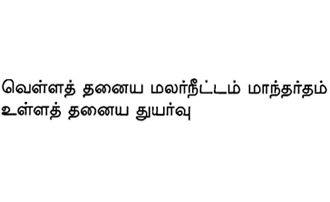
It means that whatever may be the depth of the river or lake or pond, whatever may be the condition of the water, the lilly flower always comes out and blossoms. Similarly, if there is a definite determination to achieve a goal even if it is impossible to achieve, the man succeeds.
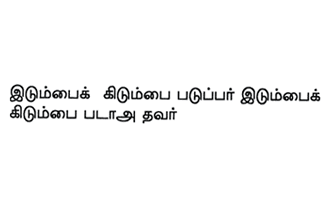
Many of us have gone through large programmes and projects. We would have experienced that success is not in sight and there are many hurdles. The same poet reminds us at this point of time through another couplet:
We should never be defeated by any problems. We should become master of the situation and defeat the problems. I consider these two Thirukkurals characterize the indomitable spirit. Such a spirit is crucial to establish �Brand Institutions�, which can create value, add wealth and develop great human resources. My best wishes to all the participants for productive deliberations leading to decisions on strategies for enhanced value creation through human development.
May God bless you.

